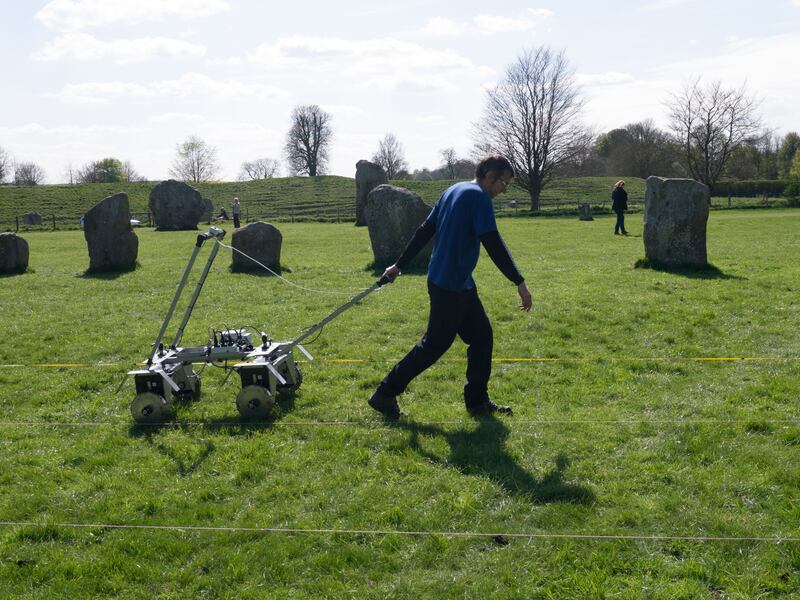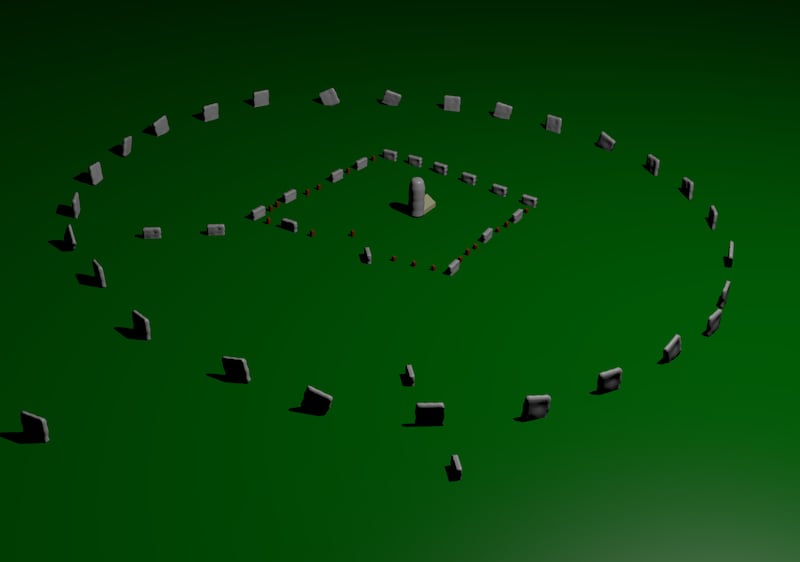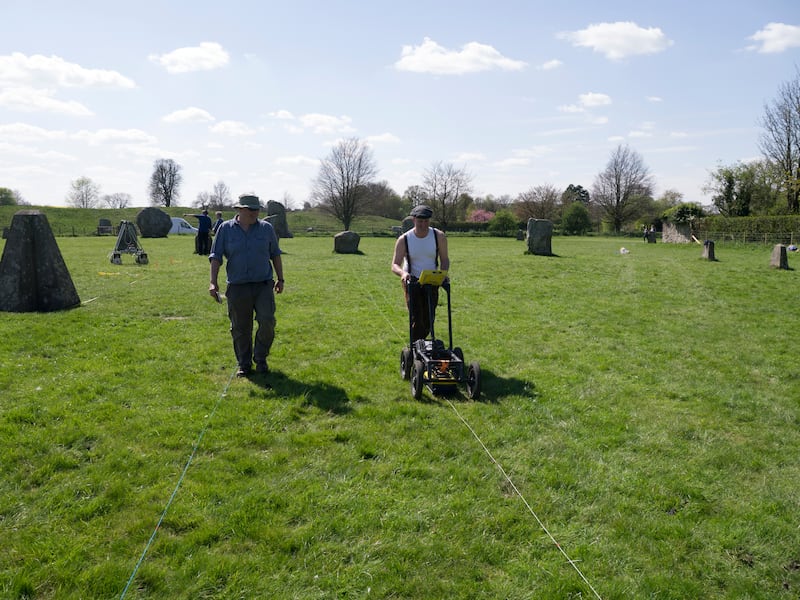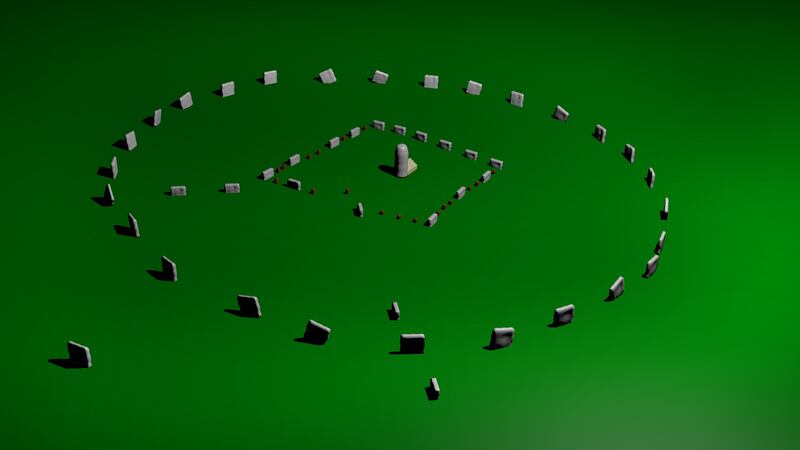Archaeologists have found a “striking and apparently unique” square monument within the famous stone circle at Avebury.
Surveys of an area at the Wiltshire World Heritage Site, where excavations were interrupted by the outbreak of war in 1939, have revealed a series of previously unknown prehistoric standing stones forming a square around 30 metres (100ft) across.
A research team led by the University of Leicester and University of Southampton deployed soil resistance surveying using electrical currents and ground-penetrating radar, to detect underground archaeological features.

They found and mapped a series of buried stones, along with the position of others thought to have been destroyed in the 17th and 18th centuries.
The Avebury site was built over several hundred years around 4,500 years ago, and consists of three stone circles, including the largest stone circle in Europe which is 330 metres across (1,080ft) and once had 100 stones.
The survey took place inside the southern inner circle, within the bank and ditch and huge outer stone circle, in an area excavated by archaeologist and marmalade magnate Alexander Keiller in 1939.
He uncovered the existence of a curious angular setting of small standing stones close to a single huge upright known since the 18th century as The Obelisk, but the outbreak of war left the feature only partially investigated. It was wrongly considered by Keiller to be a medieval cart shed.

Archaeologists now believe the square may have commemorated the location of an early Neolithic house, possibly part of a founding settlement, which was subsequently used as the centre of the southern inner circle.
Dr Mark Gillings, from the University of Leicester, said: “Our research has revealed previously unknown megaliths inside the world-famous Avebury stone circle.
“We have detected and mapped a series of prehistoric standing stones that were subsequently hidden and buried, along with the positions of others likely destroyed during the 17th and 18th centuries.
“Together, these reveal a striking and apparently unique square megalithic monument within the Avebury circles that has the potential to be one of the very earliest structures on this remarkable site.”

Dr Nick Snashall, archaeologist with the National Trust, which looks after Avebury, said the discovery, 80 years in the making, had been worth waiting for.
“The completion of the work first started by Keiller in the 1930s has revealed an entirely new type of monument at the heart of the world’s largest prehistoric stone circle, using techniques he never dreamt of.
“It goes to show how much more is still to be revealed at Avebury if we ask the right questions.”
The research was funded by the Arts and Humanities Research Council.








